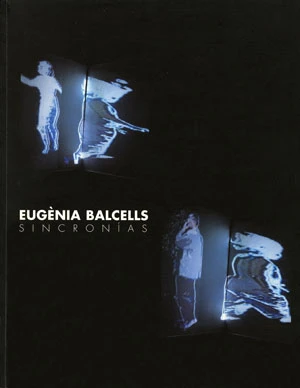Eugènia Balcells. Sincronías

Balcells sets forth an inner and outer exploration of man, emphasising the zones of union and depicting them as settings for emotion. Thus there is the recurring image and configuration of tunnels and points of access, as in En la boca de las entrañas, a close-up look at a tongueless throat that releases sounds, or the spatially prismatic passageway created by the projection and reflection of mirror images of packs of cards from divergent cultures and traditions, as seen in En tránsito.
Another setting is the forty photographs arranged in a circle and folded over that comprise Descansan como en la casa materna I, in which the artist Sjabbe Van Selfhout, naked and featureless, offers all of his corporeal geography. Descansan como en la casa materna II represents an alternative and more auratic and immaterial interpretation of the body. The negatives of the photographs mentioned above are projected in sequence, with the fusion of the images verifying, in the words of the exhibition's curator, Claudia Giannetti, “the impossibility of establishing clear borders between the inner and outer body, what is visible and what is concealed, between the subject matter and the spirit, as the anatomic body is predominantly sidereal.” This exhibition on the human condition reaches a conclusion with Sincronías, which, in Giannetti's opinion, is an example of “harmony and dissonance in interpersonal encounters” through a double slide with four screens that form a cross, two projectors and a pulley system that, with the movement of the system of screens, creates the deformation and interaction of the images.
These projects have two common themes running through them: the suspension of images, projected on rectangular or circular screens, and the mise-en-scène through the circular arrangement of images, creating both mobility and a serpentine framework of screens and mirrors. Balcells conceives these video installations by imbuing a strong sense of space, detrimental to tangible values and objects. As the video art expert, Carlota Álvarez-Basso, points out, “they fully eliminate material elements, creating ethereal artworks composed of light and space”.
Artists
Organised by
Museo Nacional Centro de Arte Reina Sofía
Image gallery


